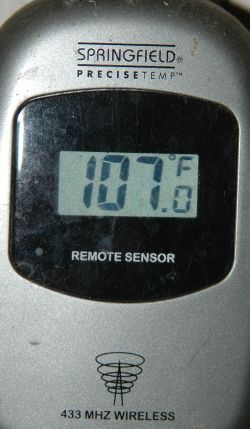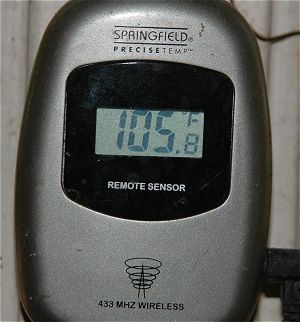Helicopter Day
Thursday night WVFD did our third training session with the good folks at Oconee County Volunteer Fire Department:
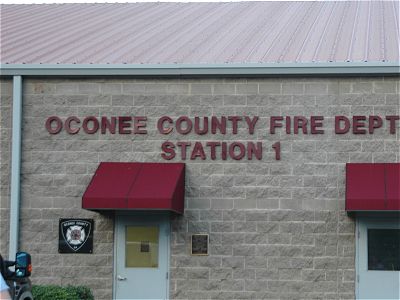
Oconee County is Oglethorpe's sister county to the southwest, one of five counties that surround Athens-Clarke County. Over the years they've been extraordinarily good to our little VFD, passing on used (sometimes barely used) equipment and turnout gear back in the days not so long ago when we didn't have anything.
You'll notice the "Station 1" in the photo above. OCFD has *eight* stations throughout the county. Its overall fire chief is Bruce Thaxton, who has gone out of his way to welcome and involve us each time we've joined them. (Station 1, btw, is a really fine and well-appointed one.)
Thursday night was helicopter air lift and rescue. We weren't sure exactly what to expect and arrived with our bags of PPE thinking it might be hands-on training. It wasn't, but that's ok. We had our hands on in the great chicken truck turnover last May.
Helicopters are so cool.
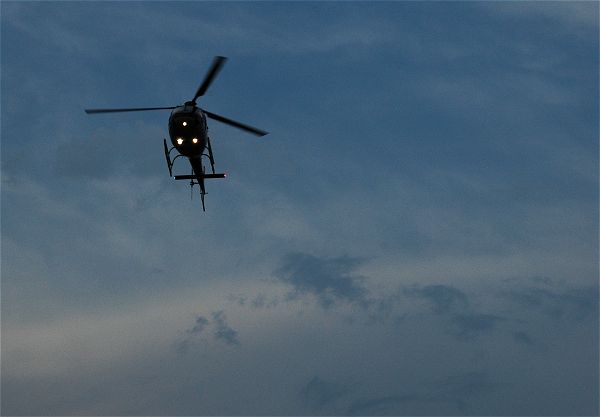
The demonstration was put on by Omniflight, which acquired Air Rescue 1 recently, if I understand correctly. It's a company that provides mutual aid to emergency medical services and fire departments. They themselves have a number of stations located strategically all over the northern half of Georgia such that they can provide an arrival time for trauma cases within an hour, and usually in half that time. Within another hour or less a case will have been delivered to an appropriate trauma center. When it's all said and done, in most airlift cases the cost and time of rescue, transport, and delivery will be less to the patient than if he or she had been carried by more conventional ground transport. And it's becoming much more common to use air transport. Air transport has become much more available, the definition of trauma is surprisingly broad now, and there are more and more trauma centers.
So you can probably tell that most of the training was in listening, and not so much in doing. The focus was in the background above, and then in safety procedures when working around a rescue helicopter. Unlike in the photos linked by the thumbnails below, the helicopter on the ground is almost always engaged with both rotors in motion.
Among the things we learned:
Fire fighters are going to bring their families to something like this. Lots of kids, wives (or husbands!), all excited and having a good time.
I mentioned that trauma is increasingly broadly defined: Heart attack. Stroke. Blood pressure or pulse above or below a certain point, regardless of injury.
All they need are coordinates provided by GPS. Many cell phones now give GPS coordinates. Maybe it's a good time to learn how to use yours - might as well put the evil things to good use ;-) .
The helicopter requires only 100 feet square in order to land, less in the daytime. This one landed in the parking lot next to the station, about 60 feet from the building.
Never move behind a line defined by the rear of the landing strut. Tail rotor and engine exhaust!
Always approach a helicopter from the front, never the sides and certainly never the rear.
The rotating blades are going to suck up any loose material. Including headgear and sheets on gurneys. That will put the helicopter out of commission and it will not leave.
Patients always go onto the stretcher feet toward the front.
These helicopters are sleek and small, yet there will be four people inside, including the patient.
Helicopters cannot see power lines from the ground. All they can see are the round tops of the power poles, and maybe a crossbar if there is one.
They won't airlift anyone who weighs much over 300 pounds.
And the thumbnails. If you look at the first one, you'll see black dots all over the image. That's not a dirty camera lens, it's flying debris. I guess that's something else we learned.
Oh - and the takeoff after the demo was delayed. A storm had moved in, with some spectacular lightning, just before they were ready to leave. They powered down and the pilot went inside the building to check the internets to see what to expect in the next few minutes.
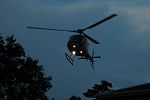
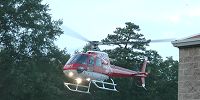
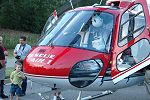
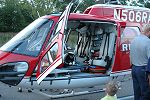
--Wayne

